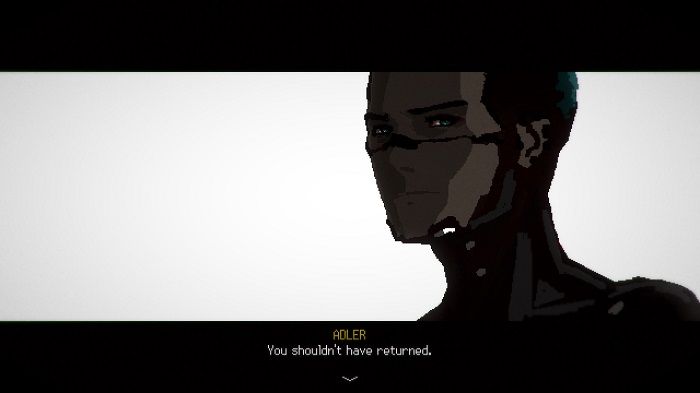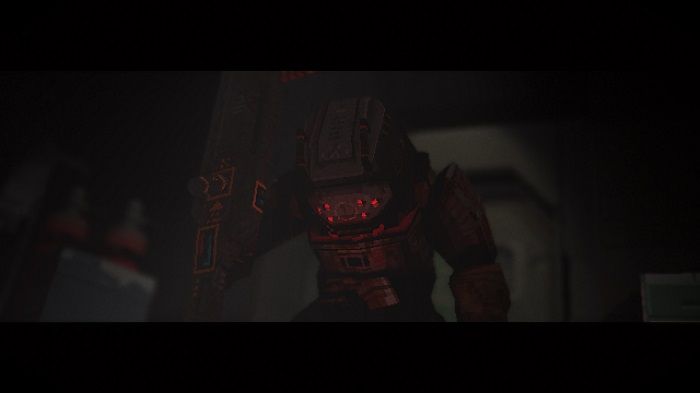Signalis Review
This Signalis review has been a long time coming. I won’t say I’ve been following the game from the very start, but I’ve already played through two previews. Watching the game come into its own has been an amazing experience. If you’re at all interested in old-school survival horror, this title is a godsend. But if you’re interested in dark, twisted, and bizarre stories, you’re in for a real treat.
Signalis is a cyberpunk story. It’s a cautionary tale about a far-future brutalist dystopia. It’s a zombie apocalypse, it’s Lovecraftian horror, it’s a psychological tale of blurring reality and blurring perceptions. In short, this game has layers to it, like an onion. But where onions will just make you cry, Signalis will make you question your sense of reality. And then jump out of your chair because you walked too loudly and a monster found you. Reportedly, it was inspired by the likes of Hideaki Anno, Stanley Kubrick, and David Lynch. Believe me, it shows, and it’s amazing.
In this game, you step into the shoes of Elster, a Replika–a robot girl looking for her human Gestalt partner. Her search takes her to a mining and re-education facility where something terrible has happened. Now undead robotic monsters wander the halls, infected by an unknown virus. As she descends deeper into darkness, the game begins spiraling into a surreal nightmare. You really have to experience it for yourself.
In the Darkness Dreaming
This game wears its inspirations on its sleeve. From the haunting cinematography to the dark anime-inspired visuals, everything feels eerie and desolate. There’s a surreal bleakness to Elster’s quest that I can’t get enough of. Every item is worn and grungy except the ones that may not even truly exist. The cutscenes are always short and uncanny, just long enough to make me jump and question what I thought the game was about. Characters are scared, worn, and deceptive. Elster’s determination and a solid gameplay loop tie all these seemingly disconnected pieces together.
Speaking of gameplay loops, Signalis uses the old-school Resident Evil approach to saving and inventory management. In other words, you have one or two save rooms per area that you must backtrack to regularly. Crates in the save rooms can store items. Otherwise, you’re stuck with just six inventory slots. Fortunately, ammo and the corresponding weapons generally share a single slot. Unfortunately, weapons still hog a space if you run out of ammo for them.

Stealth is important. Elster can carry multiple weapons, but she has limited ammo. Resources are always scarce and even if you find some, you might not be able to carry it. Inventory management is easily the hardest puzzle in the game. I carried around Elster’s photo of Alina and the Eternity Plate for a while. This was a mistake and probably made the early game much harder than it needed to be.
Signalis is the Best Kind of Nightmare
Nightmarish may be the best way to describe this game. Its murky atmosphere, ambiguous characters, and intriguing but confusing storytelling all build on each other. The result is more than the sum of its parts. And the deeper you get into Signalis, the more nightmarish the experience becomes. Enemies take longer to put down and spring back up faster. Inventory management becomes hellishly difficult. Even the ambiance and overall aesthetic become noticeably darker.

Like with most early Resident Evil clones, there are a lot of inventory puzzles in this game. Fortunately, they aren’t the only kind of puzzle Signalis has up its sleeve. Logic puzzles also show up, requiring you to either memorize instructions or figure out a solution. Decoding radio transmissions to open locks is incredibly important. There are plenty of key items—and keycards—locked behind this mechanic. Usually, I found about two to three transmissions being broadcast at once and had to pick the right one. So there’s definitely some trial and error. The same applies to deciding which enemies to permakill once you find the Thermite Flares.
One complaint I have is that it can be hard to figure out what items are for. Some things, like a socket wrench handle, are pretty straightforward. Others, like a cyborg eye that takes grayscale photos, are less clear. Since backtracking punishes you hard, this can grow frustrating quickly. I’m bad at item management so I did so much backtracking it’s not even funny. The lack of inventory space rapidly became the scariest thing the game had to offer.
Making Retro Terrifying
Signalis may have the best visual style I’ve seen in a modern horror game. It wholeheartedly embraces the fuzz, shadows, and uncertainty of PS1-era graphics. I’ve heard it said that early 3D was the scariest era in gaming. At that time, 3D graphics were just advanced enough that developers could pull off deranged designs. However, the graphics were also blurry enough that they could never quite manage a perfect representation of the creators’ visions. The space between grand idea and grainy technical limitations led to an incredibly uncanny experience. Signalis perfectly captures that uncomfortable feeling of being able to see some, but not enough.

The animation is incredibly smooth, too. Watching pixelated ripples spread out with each step is hypnotic. Signalis has turned its retro aesthetic into its greatest strength by taking advantage of its limitations. The poor visual fidelity isn’t a bug, it’s a feature. This doesn’t mean I have no quibbles about the game, of course. One thing I found puzzling is that, in the long run, Signalis encourages running. It’s the only way to really handle all the backtracking. Running does draw the attention of monsters, but when you’re just trying to get to a new room, that doesn’t matter.
Also, this might sound odd, but I think Signalis may have too many healing items. I made the mistake of burning most of mine in short succession on an early level. Then I went down a level and got more Repair Sprays than I needed. This cycle continued.

All in all, Signalis is an unforgettable and eerie experience. It makes retro survival horror feel new and unique again. Just be prepared for a story with lots of room for interpretation. And the art is still very anime.
***PC code provided by the publisher***
The Good
- Nightmarish atmosphere
- Incredible storytelling
- Cinematic cutscenes
- Solid retro gameplay
- Makes PS1-style graphics terrifying
The Bad
- Trial and error puzzles
- Inventory management is hell
- Too much backtracking
- Art style is an acquired taste

